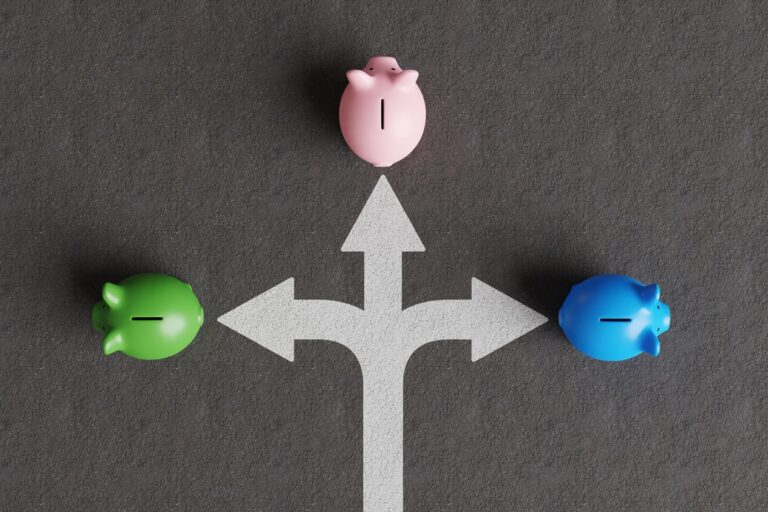On this page
What's next
Earn a high-yield savings rate with JG Wentworth Debt Relief
When people talk about a “cash advance,” they’re usually referring to borrowing money quickly when they need extra funds. The term can cover several different financial products, each with its own rules, fees, and risks. While all of them are designed to put money in your hands fast, they work in very different ways.
This guide breaks down the most common types of cash advances including credit card cash advances, payday loans, cash advance apps, personal loans, and employer-based advances so you understand how they work, when they might make sense, and what to watch out for.
*This information is provided for educational and informational purposes only. Such information or materials do not constitute and are not intended to provide legal, accounting, or tax advice and should not be relied on in that respect. We suggest that You consult an attorney, accountant, and/or financial advisor to answer any financial or legal questions. Loan eligibility and terms vary by lender and jurisdiction.
The Basics: What Does “Cash Advance” Mean?
A cash advance is essentially a short-term borrowing option that allows you to access money right away, usually with higher-than-normal costs. Depending on the type, it may involve withdrawing money directly from a credit card, receiving an advance on your paycheck, using a specialized loan app, or taking out a personal loan labeled as a “cash advance.”
The appeal is speed. Cash advances are designed for urgent situations—covering bills before payday, handling car repairs, or paying for an emergency expense. The tradeoff is usually higher interest rates, fees, or strict repayment timelines compared to more traditional forms of borrowing.
Explore Cash Advance Options
Need Cash Now?
Access offers that can provide quick access to your paycheck for an emergency, or just life’s expenses.
Credit Card Cash Advances
How They Work
A credit card cash advance lets you withdraw cash against your available credit limit, either through an ATM, at a bank, or sometimes by using a special check issued by your credit card company.
Key Features
- Immediate access: You can pull cash from an ATM using your credit card PIN.
- High interest rates: Cash advances typically carry a higher APR than normal purchases.
- No grace period: Unlike regular purchases, interest on a cash advance starts accruing immediately.
- Transaction fees: Issuers usually charge a cash advance fee—often 3% to 5% of the amount withdrawn.
Pros and Cons
- Pros: Fast, convenient, no separate loan application.
- Cons: Expensive, reduces your available credit, can make credit card debt spiral if not repaid quickly.
Payday Loans
How They Work
Payday loans are small, short-term loans meant to be repaid with your next paycheck. You write a post-dated check or authorize an automatic debit, and the lender gives you cash up front.
Key Features
- Loan size: Usually between $100 and $1,000.
- Repayment: Typically due within two to four weeks.
- Costs: Fees can translate into annual percentage rates (APRs) of 300% or higher.
Pros and Cons
- Pros: Accessible even with bad credit, immediate approval, cash in hand.
- Cons: Extremely expensive, risk of rollovers and debt cycles, often criticized as predatory.
See: Cash Advance Apps vs Payday Loans
Cash Advance Apps
How They Work
Apps like Earnin, Dave, and Brigit offer early access to wages you’ve already earned. Instead of waiting until payday, you can “advance” up to a few hundred dollars from your paycheck.
Key Features
- No traditional interest: Many rely on optional “tips” or subscription fees instead of high interest.
- Repayment: Automatically deducted on your next payday.
- Limits: Advances are typically capped at $100–$500 per pay period.
Pros and Cons
- Pros: Lower cost than payday loans, fast access, no credit check.
- Cons: Small loan amounts, dependence on steady employment, repeated use can lead to reliance.
Employer-Based Cash Advances
How They Work
Some employers let workers request a portion of their earned wages ahead of payday, either directly or through third-party platforms integrated with payroll systems.
Key Features
- No credit check: Since the funds are tied to wages already earned, your credit score doesn’t matter.
- Low or no cost: Some employers provide this as a free benefit, while others charge small fees.
- Automatic repayment: The advance is deducted from your next paycheck.
Pros and Cons
- Pros: Safe, lower cost than payday loans, directly tied to employment.
- Cons: Limited availability, reduces your upcoming paycheck, may encourage poor budgeting if used too often.
Personal Loans as “Cash Advances”
How They Work
Though personal loans aren’t technically “cash advances,” many lenders market them this way. You borrow a fixed amount from a bank, credit union, or online lender and repay it in monthly installments over time.
Key Features
- Loan size: Ranges from $1,000 to $50,000 or more.
- Repayment term: Several months to several years.
- Interest rates: Based on your credit score, often much lower than payday loans or credit card advances.
Pros and Cons
- Pros: Larger amounts available, structured repayment, lower cost compared to payday loans.
- Cons: Requires credit check, not instant (funding may take days), borrowing more than needed for a small emergency.
Bank or Credit Union Overdraft Protection
Another form of cash advance happens automatically when your bank covers a transaction that exceeds your checking account balance. This isn’t always marketed as a cash advance, but functionally, it’s the same idea: the bank fronts you money and charges you a fee or interest.
Key Features
- Linked to account: Often connected to a savings account, credit card, or line of credit.
- Costs: Flat overdraft fees or interest charges apply.
- Automatic: No separate loan application required.
Choosing the Right Type of Cash Advance
When deciding, consider:
- Speed: Do you need funds instantly or can you wait a few days?
- Cost: How much are you willing (or able) to pay in fees or interest?
- Repayment ability: Can you realistically pay it back on time without harming your finances?
- Credit score impact: Some options affect your credit, while others don’t.
Risks of Cash Advances
While they provide quick relief, cash advances carry risks:
- High costs: Fees and interest can pile up quickly.
- Debt cycle: Especially with payday loans and repeated app use.
- Reduced cash flow: Advances take away from future paychecks, leaving less money later.
- Credit damage: Falling behind on repayment can hurt your credit score.
Alternatives to Cash Advances
Before taking a cash advance, explore:
- Borrowing from friends or family.
- Asking creditors for extended payment plans.
- Using community assistance programs or nonprofit credit counseling.
- Building a small emergency fund to avoid relying on advances in the future.
The Bottom Line
A cash advance is a fast but costly way to access money when you need it most. From credit card withdrawals to payday loans and cash advance apps, the options vary widely in cost, accessibility, and long-term consequences. Used sparingly and with a plan for repayment, they can help in a true emergency. But relying on them regularly can create bigger financial problems down the line.







